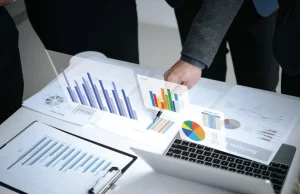How to Calculate Consumer Surplus

Demand curves
When it comes to economics, one of the best ways to analyze a market is to use a demand and supply diagram. In these graphs, the quantity of the item is on the x-axis and its price in USD is on the y-axis. Understanding supply and demand is crucial for calculating consumer surplus.
The demand curve represents the relationship between a product’s price and the amount of consumers who would want to purchase the product. By plotting a demand curve, you can easily determine the price of a product based on its demand. You can also plot a graph indicating how many units consumers would buy relative to the price. The lower the price, the higher the demand.
The difference between the price that a consumer would be willing to pay and the actual market price is the consumer surplus. Consumer surplus is positive when the price that a consumer would pay exceeds the market price. For example, if the market price of a product is $20 and the quantity demanded is 20 units, the amount that consumers would pay is $20.
Area under the triangle
The area under the triangle when calculating consumer surplus is the amount of surplus a consumer enjoys from a purchase. It is calculated using a formula that takes the base quantity, the amount the consumer pays, and the height of the demand curve into account. The base quantity is the equilibrium quantity, and the height is the amount by which the demand curve exceeds the price paid.
This formula is easy to understand and uses a basic triangle structure. For example, a trapezoid with parallel sides of 6 and 8 has an area of 28 square feet. The area of a triangle is half the base area times the height. The top triangle represents consumers.
Equilibrium point between consumer surplus and producer surplus
To understand the equilibrium point between consumer surplus and producer surplus, we need to first understand what these terms mean. A producer’s surplus is the difference between the minimum price they will accept and the equilibrium price. The equilibrium price is the price at which the marginal cost of production is $9.
The equilibrium point is the point in time where the demand and supply curves meet and show a symmetric relationship. This indicates that the quantity sought by consumers and the quantity supplied by producers is balanced. This implies that the equilibrium price represents the price at which the consumer and producer both profit.
The area below and above the demand and price curves shows the area of consumer and producer surplus. This indicates the point in time when the total surplus is maximized. The total surplus of the economy at that point is equal to the sum of the two.
Formula for calculating consumer surplus
If you want to know how to calculate the consumer surplus, there is a simple formula you can use. First, consider the price of a certain good. Let’s say you want to buy a 2020 Honda Civic. You are willing to spend up to $25,000 for the car. If there are two hundred available at that price, you would have a surplus of $5,000.
The difference between the highest price consumers would pay for an item and the actual price they actually pay for it is called the consumer surplus. This formula is based on the theory of diminishing marginal utility, and it can be very useful in understanding pricing decisions.
Examples of consumer surplus
Consumer surplus refers to the excess money that a consumer is willing to pay for a product or service. When a business knows that consumers are willing to pay a higher price, they can raise the price of their products or services. They can also raise their prices during times of high demand. Examples of consumer surplus include gasoline prices.
Consumer surplus can be determined for various types of goods and services. For example, if a consumer is willing to pay $1,250 for a new car, but is willing to pay only $750, there is a surplus of $500. The same principle applies to other asset classes. For example, a consumer willing to pay $1,500 for a HD television may find one that costs only $1,200, so they would receive the same amount of surplus if the price dropped to that price.








